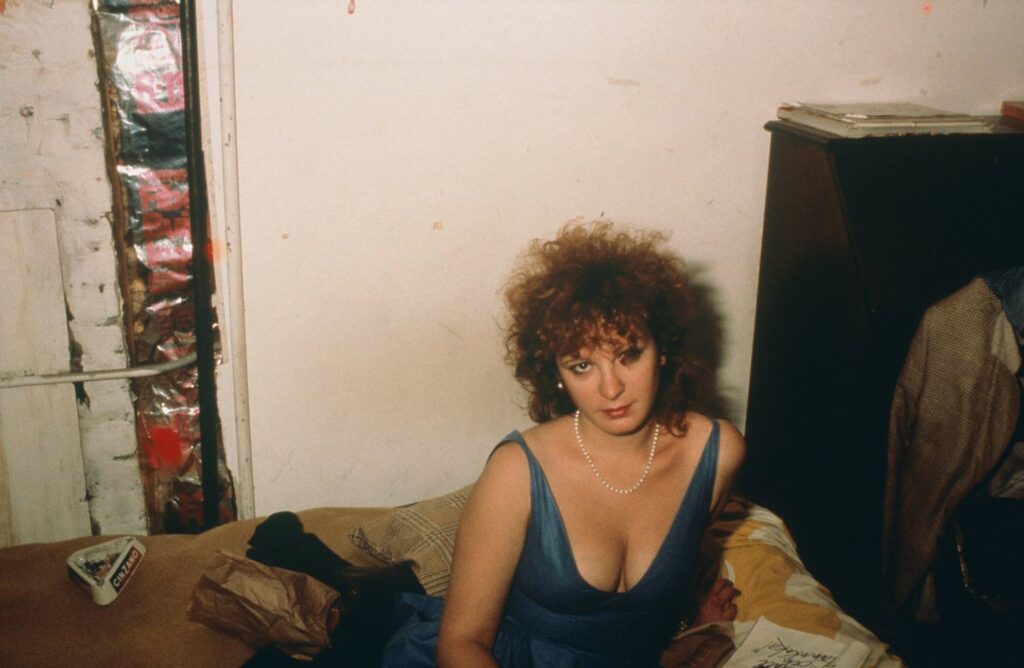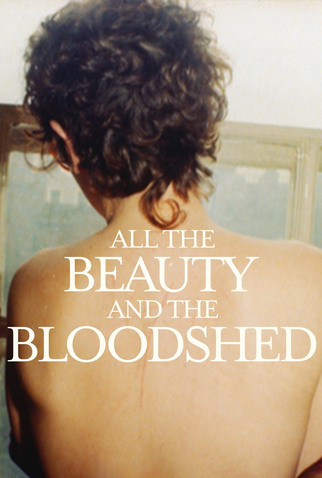All the Beauty and the Bloodshed – Snapshot
All the Beauty and the Bloodshed is a film about the life of photographer Nan Goldin. She happens to be playing an important role in the downfall of Purdue Pharma and the Sackler family. But, unless you watch this film twice, you are likely to be disappointed in the connections. (3*)
Where to Watch:
Stream: MAX
Rent: Prime/Vudu/Google/YouTube/Apple/Redbox ($4)
All the Beauty and the Bloodshed – The Oscar Buzz
Oscar Nominations:
Documentary Feature Film
All the Beauty and the Bloodshed received a single nomination for Documentary Feature Film, putting it in our “special interest” list. (Two other documentaries that we’ve reviewed this year are A House Made of Splinters and Fire of Love. This year’s winner in that category was Navalny.)
All the Beauty and the Bloodshed – The Movie’s Family Tree
The Following Movies Share Talent with This One
(and if you like these films, you might like this one):
CitizenFour (14)/My Country, My Country (06) – Director/Cinematographer (Poitras)
All the Beauty and the Bloodshed is the third film from filmmaker Laura Poitras to receive an Oscar nomination. She has a reputation of tackling difficult and relevant topics. Her first nominated film, My Country, My Country, was about the misguided war in Iraq. In the second, CitizenFour, she met repeatedly with Edward Snowden to uncover exactly what he was trying to accomplish. CitizenFour won the Documentary Oscar in 2015!.
All the Beauty and the Bloodshed – What Others Think
All the Beauty and the Bloodshed, like many documentaries, has not been seen by a lot of people, but those that have seen it weren’t very impressed. It ranks at the bottom of the five documentaries, next to the bottom of all the special interest films, and in the bottom four of all of this year’s 39 Oscar-nominated movies. In short, popular response is not very good.
Critics, on the other hand, placed this near the top of this year’s lists. Glenn Kenny (RogerEbert) wrote “The compassion expressed here, and the rich complexity of everything the movie takes in makes this Poitras’ best film.” Nicolas Rapold (Sight&Sound) said that the “filmmaker is able to channel so much, so movingly, from Goldin, unifying the personal and the political in a kind of communion.” And Manohla Dhargis (New York Times) gave the film a Critics Pick and and called it an “emotionally ferocious story of the world that Nan Goldin inherited and remade, one that she continues to remake with her brilliance and with all the bruises that never heal.”
This is one of those movies where the professional critics found much to love about the film, while the general viewing public was greatly disappointed. We will examine more of what might explain that difference in the last section.
All the Beauty and the Bloodshed – Special Mention
Most of the critics noted that All the Beauty and the Bloodshed really has two tracks. One is the life story of the artistic photographer Nan Goldin, and the other is the opioid epidemic fueled, largely, by Purdue Pharma’s introduction and marketing of OxyContin in the late nineties. (One of the critics referred to these themes as the strands of the movie’s double-helix). So it is helpful to know a bit about both of those topics.
Nan Goldin – was born in 1953 in Washington D.C. Without providing too much in the way of spoilers because much of this is covered in the film, she and her family suffer a major trauma involving her elder sister, whom she adored, when Nan was just eleven years old. The trauma left the family pretty dysfunctional and Nan spent her late teens in foster homes and schools for disturbed teens.
She discovered the camera at age 16 and, for her, taking pictures was not just therapeutic but had a profound effect on how she understood and coped with her world. She moved between Boston, Berlin, and New York City, circulating in, and photographing, the gay, transgender, drag queen, punk, and hard-drug worlds during the 70s and 80s. Many of her friends, and the subjects of her photos were dead by the 90s, lost to the AIDS epidemic.
At one point she suffered a wrist injury and was prescribed OxyContin to which she quickly became addicted. She was finally able to recover from that addiction in 2017, formed a group to fight the powerful drug industry and, as the movie chronicles, was able to score some major successes.
One of the main reasons she was able to achieve so much in her fight against drugs was because of her prominence in the art world. Her photographs, displayed mostly as slide shows, were in high demand and it is the intersection of her art and her addiction that gives her power. And, of course, is the subject of All the Beauty and the Bloodshed.
OxyContin/Purdue Pharma/The Sackler Families – Oxycodone was a powerful narcotic pain reliever dating back to 1916. By the 1990s, though, its addictive powers were being recognized and it was either discontinued or significantly scaled down. But in 1996 Purdue Pharma introduced OxyContin, a reformulated version of oxycodone. They marketed it largely by selling to physicians, giving them incentives to write more and more prescriptions. And they minimized its addictive nature. We know today, that the overprescription of the drug has led to hundreds of thousands of addictions and the deaths of half a million people due to overdose.
Purdue Pharma was bought by the Sackler family decades ago, and they became fabulously wealthy, especially from the sales of first, Valium, and then, OxyContin. In what is referred to as “reputation laundering”, they gave away millions of dollars to various cultural institutions throughout the US and Europe earning them nameplates on museum rooms and wings. Their largesse was huge. (What used to be the Sackler Wing at the Metropolitan Museum of Art in New York, housed the Egyptian Temple of Dendur and was a stunning site.)
Starting in 2019, lawsuits against Purdue Pharma and the Sackler family started to pile up, arguing that the company, and the family, knew of the addictive nature of OxyContin and downplayed it, and, therefore, had responsibility for the many victims. They were the subject of a House of Representatives hearing in 2020 where they were accused of being “addicted to money.” A year later, Purdue Pharma files bankruptcy and is dissolved with the stipulation that the Sacklers would be personally immune from any civil liability. The US Supreme Court is hearing arguments on whether that immunity is binding this December, so the jury is still out. But there is also evidence that the Sacklers withdrew billions from the company, protecting their assets and minimizing the amount the company could pay out in victim compensation.
All the Beauty and the Bloodshed – Michael’s Moments
All the Beauty and the Bloodshed tries to weave these two threads – the life of Nan Goldin and the downfall of OxyContin and the Sackler family – into a coherent argument. Critics compare the synthesis to an elegant double-helix; audiences are much less convinced.
The first time I watched this film, I was more than a little confused. I don’t read much about a film before I watch it, but what I had read suggested it was about the OxyContin opioid epidemic and the downfall of the Sacklers. As indicated in the above section there is certainly enough to make a movie out of that. And the first three minutes of the film focuses on the seminal protest in the Sackler Wing at the Metropolitan in New York.
But then there is a dramatic shift to the introductory credits and a simulated slide show of pictures, that we later learn were taken by Nan Goldin, playing underneath. Then we move to a picture of a brick house on a steep lot and a story of a dysfunctional family in the 1950s. And a lot goes down in that section of the movie, although there is certainly no connection to OxyContin or the Sackler family.
After about twenty minutes of that, we move to 2015 or so and learn about Nan’s addiction and quickly shift to the Sackler family, Valium, and “reputation laundering”. This shifting back and forth between Nan Goldin’s life and the movement to discredit the Sacklers and Purdue Pharma goes back and forth at least four more times. Joan and I ended the movie with bewildered looks and wondered if somehow two entirely different movies had simply gotten spliced together – we felt confused and abused. Given audience reaction, I don’t think we are alone in those feelings.
I always watch a movie twice. First time I know nothing except whatever casual stuff comes across like short movie descriptions on the streaming service. The intent is to view the movie with minimal bias. Then I do my research which involves hours of digging around into the biographies of the filmmakers and actors, the reviews of influential critics, and, some cursory research into relevant topics. After immersing myself in the details, I then watch the film again to see if I have learned anything that helps me get more out of the film.
On the second viewing, All the Beauty and the Bloodshed does make a little more sense. But only in a convoluted way. There is no obvious connection between the segments related to Nan Goldin’s life history and those chronicling the OxyContin side of things except her OxyContin addiction but there are. no thematic or stylistic similarities between these two pars of the film. They are still just two different stories that share a common actor – Nan Goldin.
And then it kind of dawned on me what the problem was – expectations. If the viewer goes into this film expecting it to be about the opioid crisis, you will be severely disappointed. There is a film in there about that, but its a different film from All the Beauty and the Bloodshed. But if you look at the film as a review of Goldin’s life and her recent accomplishments, then the movie improves. (Even the title of the film has a very non-obvious source – and is not related to the opioid crisis at all!)
The critics, perhaps based on their knowledge of CitizenFour, which was a great film, were already expecting a good film and, therefore, created a “double-helix” structure to explain, and justify, its convolution. But who are the movies for – the viewing public, or critics? All the Beauty and the Bloodshed greatly improves on the second viewing. But how many of you are going to watch a two-hour documentary twice? (3*)


